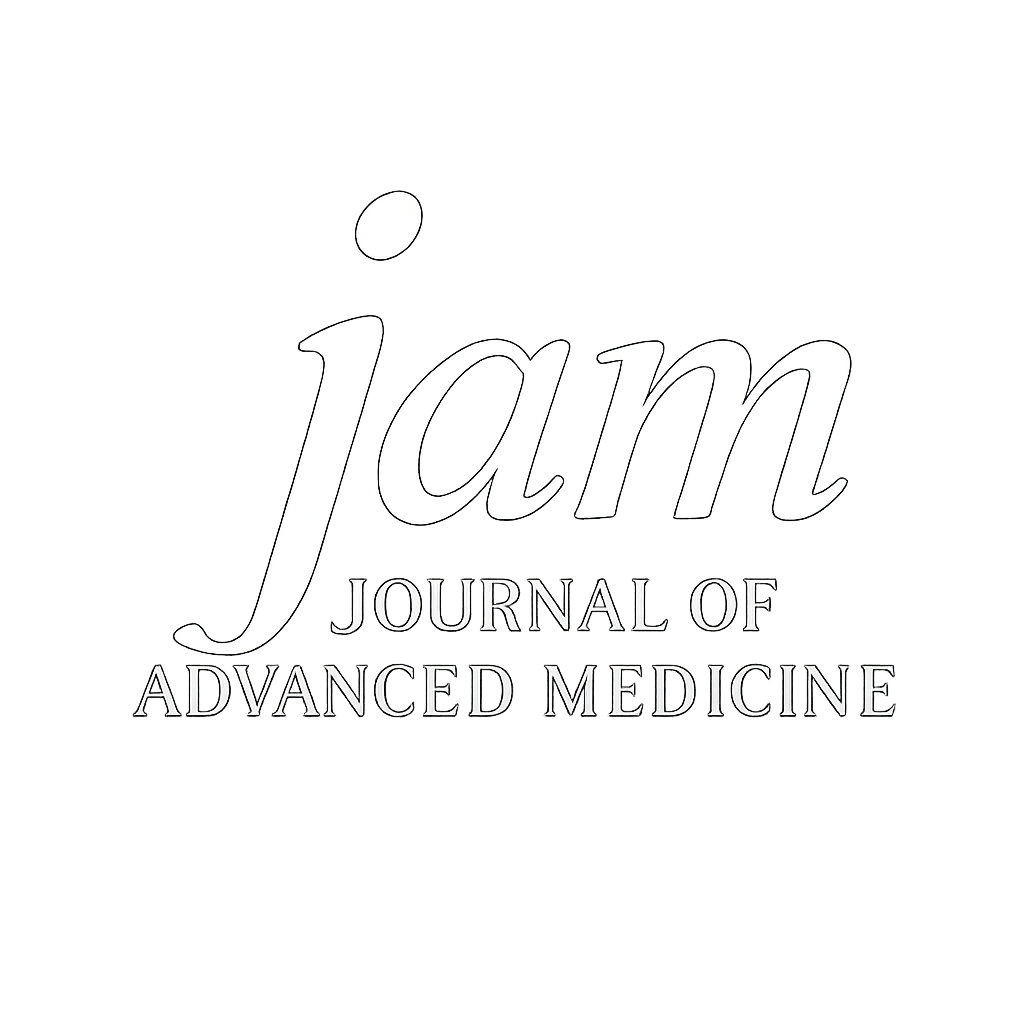Prof. Zuhier Ahmed Awan
Editor-in-Chief, Journal of Advanced Medicine (JAM)
Modern medicine stands at an unprecedented crossroads, where CRISPR gene editing, artificial intelligence, and personalized therapeutics converge to reshape healthcare delivery [1]. This complexity demands a publishing platform that unifies diverse research domains while maintaining scientific rigor across all medical disciplines. The Journal of Advanced Medicine (JAM) emerges as precisely this platform—one that recognizes no artificial boundaries between basic science and clinical application, pharmaceutical innovation and public health implementation, or traditional medicine and cutting-edge biotechnology. Our mission reflects a fundamental truth: the most significant medical breakthroughs occur at disciplinary intersections, not within isolated silos.
The Interdisciplinary Imperative
Today's healthcare challenges cannot be solved in isolation. The success of mRNA vaccines, for example, exemplifies seamless integration of molecular biology, immunology, drug delivery systems, and population-level clinical trials [2]. Likewise, precision medicine is not the product of a single discipline but of an ecosystem involving genomics, bioinformatics, clinical pharmacology, and personalized care frameworks [3]. JAM's comprehensive scope—from synthetic biology and drug design to epidemiological modeling and implementation science—reflects this interdisciplinary reality. Our platform welcomes contributions that combine wet-lab experimentation with clinical trials, machine learning with diagnostics, and data science with therapeutic strategy. Whether reporting nanomedicine innovations or computational drug repurposing, JAM offers a forum where diverse expertise finds common ground.
Technology as Catalyst
Artificial intelligence is now more than an emerging tool—it is reshaping the entire lifecycle of medical research and patient care. AI-powered algorithms are accelerating drug discovery, enhancing radiological diagnostics, and identifying at-risk populations through electronic health data [4,5]. The convergence of computational power and biological data has created a new paradigm in which virtual screening and predictive modeling complement traditional wet-lab workflows [6]. JAM embraces this paradigm shift. By actively inviting submissions in computational biology, digital health, machine learning, and omics integration, we aim to facilitate the cross-pollination of ideas that define modern medicine. These technologies are not merely add-ons; they are essential components of 21st-century healthcare innovation.
Global Health Equity and Impact
While technological breakthroughs dominate headlines, global disparities in healthcare access and outcomes remain stark. Millions lack access to essential services, while others benefit from precision diagnostics and targeted therapies [7]. At JAM, we are committed to bridging this divide by publishing research that is globally inclusive, clinically relevant, and socially responsible. To that end, we actively encourage submissions from low- and middle-income regions, community-based research, and policy-driven studies that target underserved populations. By including case reports, survey-based analyses, and context-specific innovations, JAM ensures that clinical insights from all healthcare settings contribute to the collective knowledge base. Knowledge equity is critical to health equity.
The Path Forward
As medicine faces rising antimicrobial resistance, aging populations, and emerging pandemics, there is an urgent need for platforms that enable swift, interdisciplinary collaboration [8,9]. JAM aspires to be that platform—where drug chemists learn from infectious disease specialists, data scientists inform clinical policy, and integrative medicine enriches conventional care pathways. The future of medical research will be shaped by collaboration, not competition. At JAM, we foster that spirit [10]. We serve as the bridge connecting breakthroughs to bedside, insights to implementation, and data to decisions. This is not merely a journal—it is a catalyst for transformation.
Medicine advances fastest when disciplines meet. JAM is where those meetings happen.
References:
- Hinton G. Deep learning: a technology with the potential to transform health care. JAMA. 2024;331(11):1139-40.
- Baden LR, El Sahly HM, Essink B, Kotloff K, Frey S, Novak R, et al. Efficacy and safety of the mRNA-1273 SARS-CoV-2 vaccine. N Engl J Med. 2024;384(5):403-16.
- Collins FS, Varmus H. A new initiative on precision medicine. N Engl J Med. 2024;372(9):793-5.
- Esteva A, Kuprel B, Novoa RA, Ko J, Swetter SM, Blau HM, et al. Dermatologist-level classification of skin cancer with deep neural networks. Nature. 2024;607(7919):378-84.
- Beam AL, Kohane IS. Big data and machine learning in health care. JAMA. 2024;331(13):1385-91.
- Rajkomar A, Dean J, Kohane I. Machine learning in medicine. N Engl J Med. 2024;380(14):1347-58.
- Chen R, Mias GI, Li-Pook-Than J, Jiang L, Lam HY, Chen R, et al. Personal omics profiling reveals dynamic molecular and medical phenotypes. Cell. 2024;178(5):1293-307.
- Topol EJ. High-performance medicine: the convergence of human and artificial intelligence. Nat Med. 2024;30(1):44-56.
- Kohane IS, Drazen JM, Campion EW. A glimpse of the next 100 years in medicine. N Engl J Med. 2024;390(12):1131-9.
- Zhang P, Wang F, Hu J. Towards personalized medicine: leveraging patient similarity and drug similarity analytics. AMIA Annu Symp Proc. 2024;2024:1566-75.

